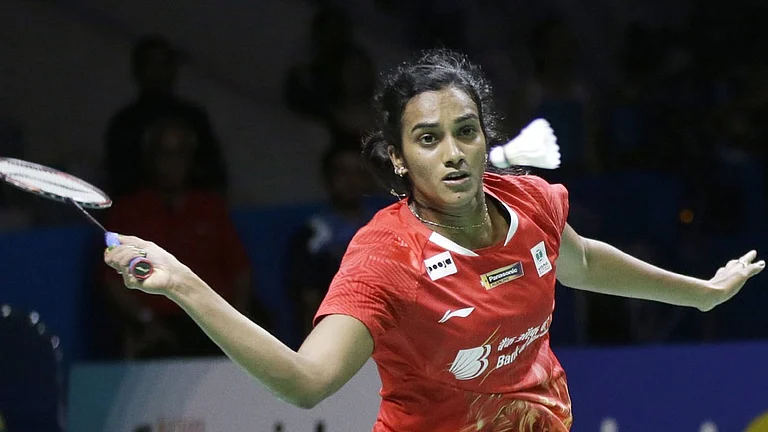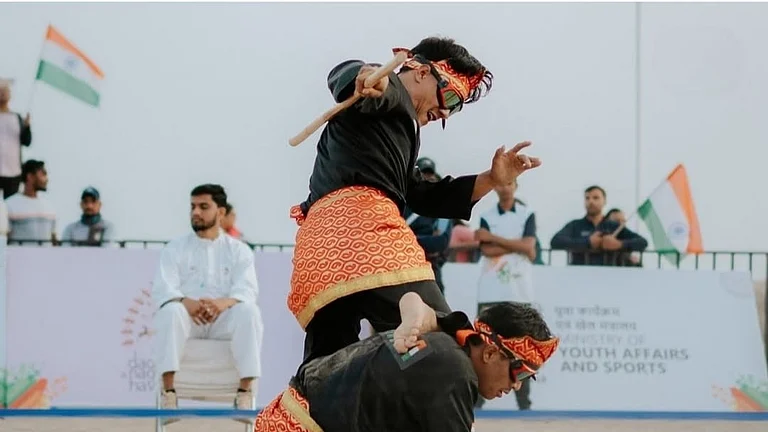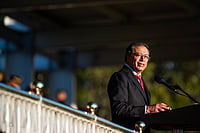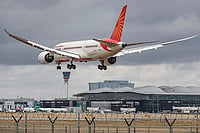When the Lok Sabha and the Rajya Sabha move to the New Parliament House on Tuesday, the new building will take over the role of the 'temple of Indian' democracy currently held by the colonial-era building, which will be turned into a heritage complex.
The older complex that has so far been the seat of Indian democracy will enter the pages of history as a monument once of high value — not unlike many found all over the country.
Despite so many monuments being around us, the old Parliament House is unique in a way that it has witnessed the entire journey of modern India, right from the days of self-rule movement to the birth of the republic to the most iconic moments of Independent India, ranging from the mighty Indian victory over Pakistan in 1971 to the poetic brilliance of Atal Bihari Vajpayee to heated as well as lyrical exchanges between Members of Parliament (MPs).
PM Modi Recalls Historic Moments in Parliament
As the country bids farewell to the old buildings, Members of Parliament (MPs) on Monday recalled their fond memories from the complex. Prime Minister Narendra Modi led the tributes and recalled the Prime Ministers of India and others leaders from Pandit Jawaharlal Nehru to Vajpayee and Manmohan Singh.
Initiating the discussion in the Lok Sabha on 'Parliamentary Journey of 75 years starting from Samvidhan Sabha - Achievements, Experiences, Memories and Learnings', Modi said it was a very emotional moment to bid farewell to this building.
Modi recalled Nehru's "tryst with destiny" speech "at the stroke of midnight hour" and said his words continue to inspire everyone.
"In the same House, Atalji's words about 'sarkarein aayegi, jayegi; partiyan banegi, bigdegi; lekin yeh desh rehna chahiye' (governments may come and go; parties may be formed or disbanded; but this nation has to live on) continue to echo even today," said Modi, as per PTI.
Modi also recalled the moment Bhagat Singh and Batukeshwar Dutt hurled bombs in the house during the British Raj. Back then, the building served as the Delhi Central legislative assembly.
Modi also recalled Lal Bahadur Shastri, Indira Gandhi, BR Ambedkar, and the security persons and parliamentary staff who died in the attack on the parliament.
"It was not an attack on the building but an attack on the Mother of Democracy itself. It was an attack on the soul of India...I also salute those who faced bullets on their chests to save the House and its members while fighting the terrorists. They are not among us, but they have protected us in a great way," said Modi.
While Modi recalled the triumph in the 1971 India-Pakistan War, he also recalled the Emergency during Indira's time, which was imposed in 1975.
Speaking on his own journey, Modi said he could have never thought a child from a poor family living on the railway platform could reach the Parliament.
"But this is the strength of India's democracy and a reflection of the faith of the common man of India towards democracy that a child from a poor family, living on the railway platform, reached Parliament," said Modi, as per PTI.
How Parliament witnessed the journey of India
The Parliament building, set to itself fade into history, has so far witnessed and has been home to some of the most historic moments of modern India.
The hallowed precincts of Parliament have witnessed lively debates on the making of Constitution, the poignant scenes after the announcement of the death of Mahatma Gandhi, and the thumping of desks when the then Prime Minister Indira Gandhi announced the unconditional surrender of Pakistan forces in the then-East Bangladesh, now known as Bangladesh.
The heartfelt speeches of first Prime Minister Jawaharlal Nehru, the calm but firm resolve of Lal Bahadur Shastri, the eloquence of Indira Gandhi, the poetic brilliance of Atal Bihari Vajpayee, and the powerful oratory of Narendra Modi have reverberated through the chambers of Parliament.
From the first steps towards democracy to Independence
The foundation stone of the colonnaded building was laid by Prince Arthur, the Duke of Connaught in 1921, and the building was inaugurated on January 18, 1927. The recently concluded monsoon session of Parliament could perhaps be the last in the old building.
"Today you meet for the first time in your new and permanent home in Delhi," Lord Irwin, the Viceroy, told the first session of the third legislative assembly on January 24, 1927.
"In this chamber, the Assembly has been provided with a setting worthy of its dignity and importance, and I can pay its designer no higher compliment than by expressing the wish with that the temper, in which the public affairs of India will be here conducted, may reflect the harmony of his conception," he said.
Pandit Madan Mohan Malviya, Muhammad Ali Jinnah, Pandit Motilal Nehru, Lala Lajpat Rai, C S Ranga Iyer, Madheo Srihari Aney, Vithalbhai Patel among others were the members of the third legislative assembly.
Through the Government of India Act, 1919, the British had started allowing greater participation of Indians in the government.
Two years later, revolutionaries Bhagat Singh and Batukeshwar Dutt hurled bombs in the Assembly chamber from the public gallery after the House had passed the controversial Trade Disputes Bill.
"At this stage two bombs were thrown from the Visitor's Gallery, and burst among the benches occupied by the official members, causing injury to certain members. Confusion prevailed and Mr President retired. After a few minutes, Mr President resumed the Chair," says the official report of the proceedings of the Legislative Assembly of April 8, 1929.
Vithalbhai Patel was the then president of the Legislative Assembly, a post which came to be known as the Speaker as parliamentary democracy evolved in the country.
Historic moments witnessed in the Parliament House
On the eve of Independence, the Constituent Assembly met at 11:00 pm with President Rajendra Prasad in the Chair. Sucheta Kriplani, a member from Uttar Pradesh, sang the first verse of Vande Mataram to mark the opening of the special session.
Prime minister Jawaharlal Nehru delivered his famous "tryst with destiny" speech which was followed by a pledge by members of the Constituent Assembly dedicating themselves to the service of the nation.
Speaker G V Mavlankar announced the death of Mahatma Gandhi at a sitting of the Lok Sabha on February 2, 1948.
"We are meeting today under the shadow of a double calamity, the sad demise of the tallest man of our age who has led us from slavery to independence and the reappearance of the cult of political violence in our country," Mavlankar said. "A glory has departed and the sun that warmed and brightened our lives has set and we shiver in the cold and dark," Nehru said.
It was from the same House that Prime Minister Lal Bahadur Shastri made an appeal to the country to skip one meal every week as India struggled with food shortages and fought a war against Pakistan in 1965.
When Lok Sabha met after the imposition of Emergency in 1975, the House witnessed protests from several members against the government's move to suspend private members' rights to raise issues in the House. Deputy home minister F H Mohsin placed the Proclamation of Emergency made by the President when the Lok Sabha met on July 21, 1975. Lok Sabha members Somnath Chatterjee, Indrajit Gupta, Jagannathrao Joshi, H N Mukherjee, P K Deo protested the suspension of their rights.
"It may be the swansong for democracy but I have to say and I say with all the emphasis at my command that when there is no specific rule to give blanket power for suspension of this nature, it cannot be admitted," Deo, a member of Swatantra Party from Kalahandi, said.
The rise of nuclear India
In 1974, the then prime minister Indira Gandhi made a detailed statement in Parliament on July 22, apprising the House of the "peaceful nuclear experiment" at Pokhran and reaction of other countries to it.
Almost 24 years later in 1998, then prime minister Atal Bihar Vajpayee declared India as a nuclear weapons state after scientists carried out five underground nuclear tests on May 11 and May 13 that year.
"India is now a nuclear weapon state. This is a reality that cannot be denied, It is not a conferment that we seek; nor is it a status for others to grant. It is an endowment to the nation by our scientists and engineers. It is India's due, the right of one-sixth of humankind," Vajpayee said.
Vajpayee also announced a no-first use policy, seeking to assure the world that was caught unawares about the tests.
In 2008, prime minister Manmohan Singh launched a forceful defence of his coalition government during a vote of confidence after the Left parties withdrew support following differences over the nuclear deal with the US.
From coalition era to Modi era
With the country's politics entering the coalition era in 1989, Parliament witnessed frequent change of governments till 1998, when the BJP formed a coalition under Prime Minister Atal Bihari Vajpayee.
Within a year, the Vajpayee government fell after losing the vote of confidence in the Lok Sabha by a single vote on April 17, 1999, only to be re-elected in the subsequent general elections.
Then, the Congress ousted the BJP in 2004 and formed the United Progressive Alliance (UPA) coalition government that had its fair share of ups and downs. The Parliament during the UPA government was often a lively place where Sushma Swaraj and Arun Jaitley of the BJP led Opposition's charge against the government and clips of Swaraj's speeches or Lalu Prasad Yadav's rustic humour continue to go viral from time to time.
The decades of coalition era ended in 2014 when Narendra Modi stormed to power with BJP's majority on its own for the first time.
(With PTI inputs)


























